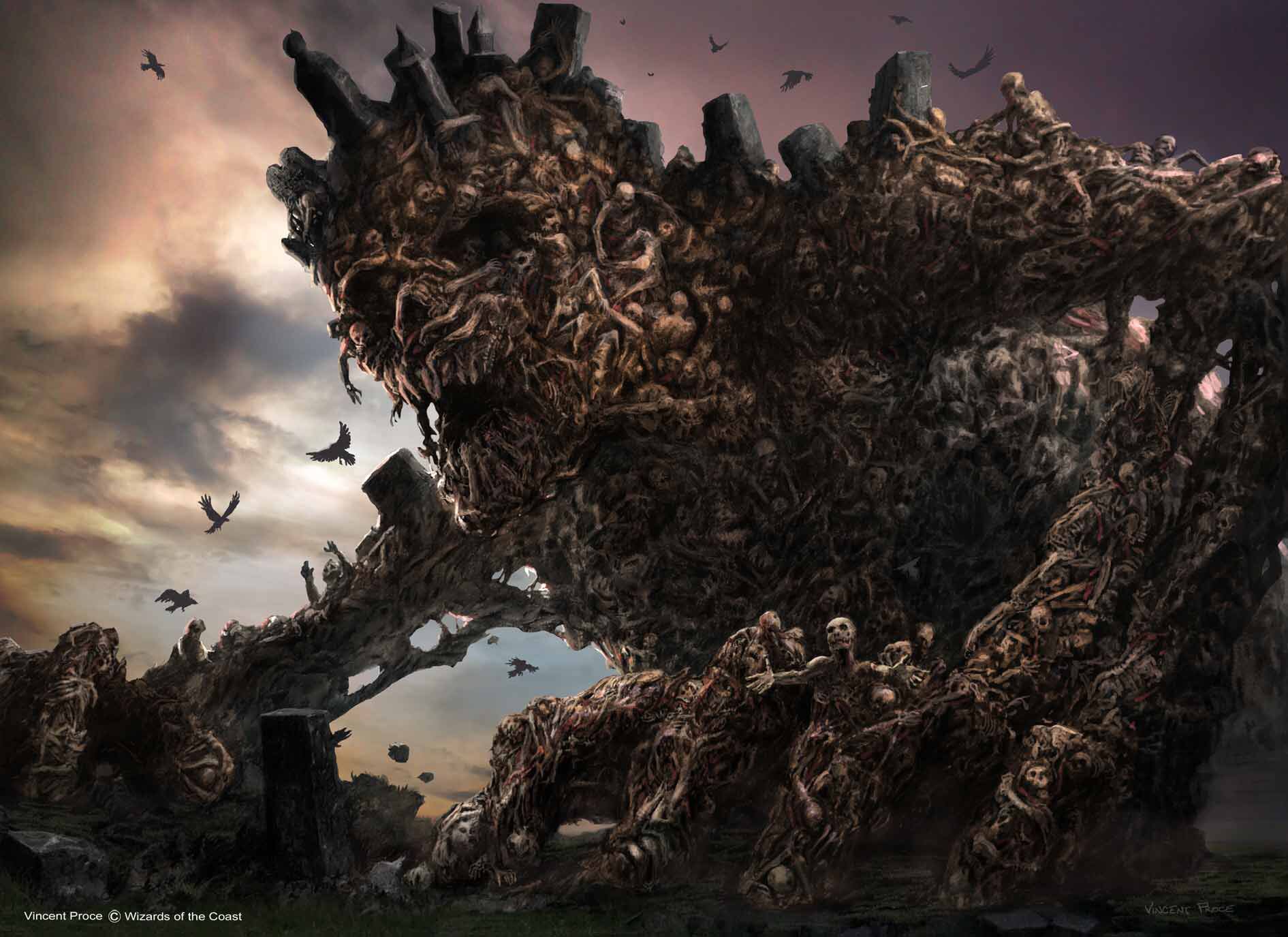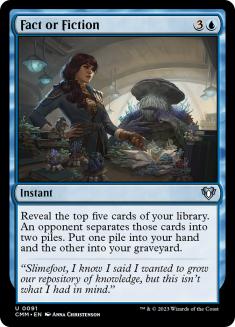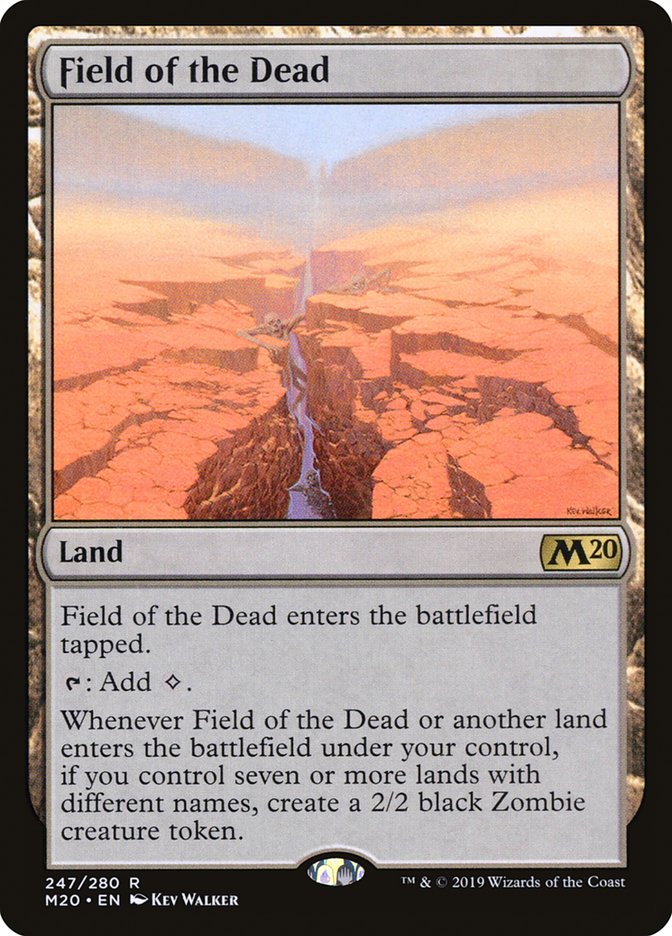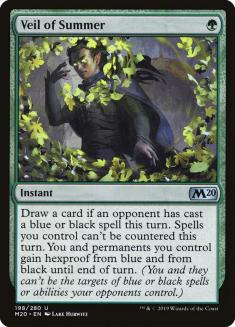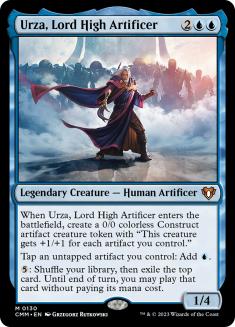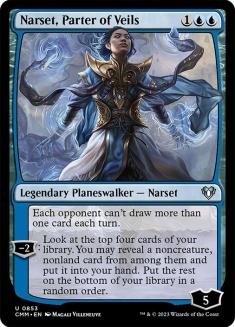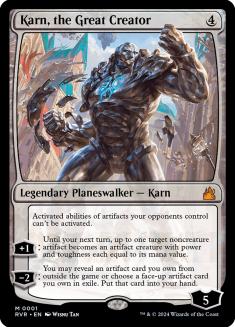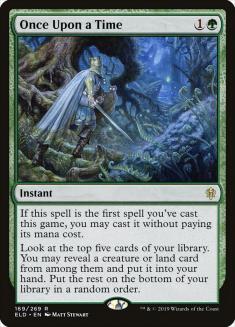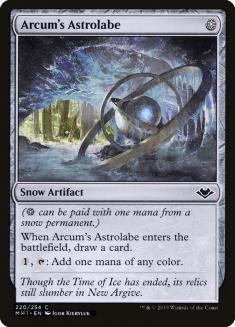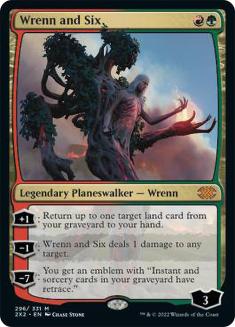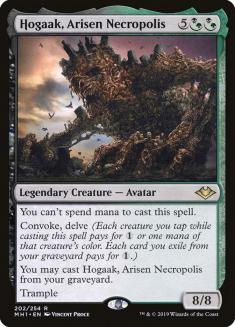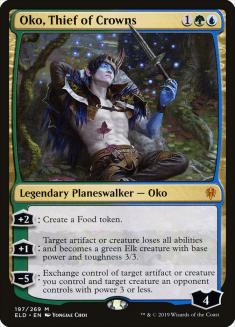In the year 2000, the best card printed was probably Fact or Fiction. That card was reprinted in 2019. It wound up not even being playable in Modern.
To say 2019 was a year of powerful cards would be the understatement of…well, the year 2019!
Like it or not, this past year saw some of the best cards ever printed, including enough incredible Planeswalkers to upend all the traditional “best Planeswalker of all time” lists and push even the venerable Liliana of the Veil out of many Top 5 lists.
From artifacts that bent manabases further than ever before, to hate cards that warped every format they were legal in, to lands that gave inevitability to any deck that could run them, these are the best cards (or worst cards, depending on how you quantify those terms) of 2019.
10. Field of the Dead
Banned in Standard and Pioneer, Field of the Dead was the unassuming land that ended up dominating for a good part of the year in the lighter formats.
Sort of like a Valakut, the Molten Pinnacle that demanded allegiance to a diverse manabase of one-of lands, rather than all Mountains, Field of the Dead started off by winning Grand Prix Denver in the hands of Luis Scott-Vargas in concert with the powerful Scapeshift.
Creatures (12)
Planeswalkers (4)
Lands (28)
Spells (16)

In concert with Scapeshift, Field of the Dead was unbeatable. As early as Turn 5, the Scapeshift player could be attacking for the win with a pile of Zombies. Of course, with Scapeshift rotating out, Field of the Dead was supposed to be somewhat tolerable, and a decent way for grindy midrange decks to close out the game against control.
That was the case until Bant Golos decks dominated Mythic Championship V, forcing a ban in Standard.
But only a few short weeks later, Pioneer came out and Star City Games’s own Sam Black and Autumn Burchett quickly found a niche for Field of the Dead there as well.
Creatures (14)
Lands (25)
Spells (21)

Field had to be banned there, too.
What’s the lesson here? Lands that produce inevitability are homogenizing, format-warping, and breakable. When you can build your win condition into your manabase, silly things start to happen. Be on the lookout for more powerful lands that you can incorporate into your midrange decks in 2020 to fight back against control decks. My money’s on Castle Locthwain for this purpose, but we’ll see what the supporting cast looks like.
9. Veil of Summer
The second card that had to be banned in Standard and Pioneer from Core Set 2020, Veil of Summer is powerful in a different way from Field of the Dead. Where Field provided an endgame, Veil provides a savage hate card, possibly the best one we’ve ever seen.
For context: Red Elemental Blast is a powerful card in Legacy, where it hits Brainstorms, Jaces, and Force of Wills with ease. It’s good enough to occasionally see maindeck play when the format becomes particularly blue-dense, and it’s a sideboard staple in decks like Miracles, which occasionally even splash just for the ability to play this spell.
Veil of Summer is a Red Elemental Blast that also works against black cards, and draws you a card on top of that.
The rate on a hate spell has never been so good. In Modern, Veil of Summer is still making Thoughtseize a liability, and pushing Fatal Push right out of the format.
In Legacy, it’s done strange things to decks, as everyone tries to get ahead in the strange arms race of counterspells and multicolored counter-counterspells. The format has been remade, featuring weird stacks involving Pyroblast, Veil of Summer, Force of Will, and more.
Oliver Tomajko capped off an incredible year on the SCG Tour by winning the Players’ Championship with this wild Legacy list (yes, featuring maindeck Pyroblast and maindeck Veil of Summer!):
Creatures (7)
Planeswalkers (6)
Lands (20)
Spells (27)

And yes, for the crime of making interactive spells too bad, Veil of Summer got hit with the banhammer in the lighter formats, as well. Looks like adding the text “draw a card” to Autumn’s Veil was the difference between unplayability and bannability. Funny how that works.
8. Urza, Lord High Artificer
All hail Lord Urza! To be honest, this spot on the list was close between the busted creature and Teferi, Time Raveler. The reason for Urza over the powerful three-mana planeswalker came down to the following: Which card do I fear more?
When the opponent drops a small Teferi, it’s an annoyance, but it often doesn’t do much more than a Repulse against a wide variety of decks. In fact, if an opponent uses the -3 ability on Teferi, Time Raveler, I’m often inclined to let them have another turn or two with it before devoting any creatures to attacking it down.
With Urza, though, it’s do or die. If the opponent untaps with this creature on the battlefield, they generate tons of mana and often pull away with the game. They can start flipping cards off the top of the deck and casting them for free, or even assemble some type of combo turn with Sword of the Meek and Thopter Foundry, or just turn random Food tokens into Mox Sapphires and dump their whole hand on the table.
Not to mention, Urza brings his own Construct to generate immediate value even if he does get killed!
From the moment this card saw print in Modern Horizons, it began to exert pressure on the format, and now decks like Humans and Grixis Death’s Shadow look positively antiquated.
Tomajko also put on a clinic at the PC with this well-tuned Urza deck in Modern:
Creatures (14)
Planeswalkers (4)
Lands (20)
Spells (22)

Modern at the outset of 2020 appears so different from Modern one year ago, it’s as if they were different formats. The flagship creature of the current best deck has a lot to do with that.
7. Narset, Parter of Veils
Narset, Parter of Veils is on this list for her impact on the oldest formats in Magic: Legacy and Vintage. Sure, Narset is a solid card in Modern control decks, and it was a critical part of the Esper Superheroes deck I played at Grand Prix Kansas City earlier this year:
Creatures (8)
Planeswalkers (12)
- 4 Teferi, Hero of Dominaria
- 1 Liliana, Dreadhorde General
- 4 Teferi, Time Raveler
- 3 Narset, Parter of Veils
Lands (26)
Spells (14)

Let’s be honest, though. Narset just does dirty things in the cantrip formats.
Half Dig Through Time, half Leovold, Emissary of Trest, Narset is quite the superstar. Often, opponents find themselves locked out of half their spells in Legacy, staring at a hand of Ponders and Brainstorms and wondering where it all went wrong.
It also does insane work digging for protection spells to keep it around, or even second copies of itself for after the opponent has exhausted resources killing the permanent.
Funny enough, Narset was also the impetus for one of the few truly interesting decision points with a planeswalker in recent history, where the permanent itself was so powerful against certain decks with Lightning Bolt, that it often made sense to simply cast the card and not use its ability at all! If someone had a hand of Serum Visions or Manamorphoses or Faithless Lootings, Narset could do some real damage as a simple stop sign for cantrips.
In fact, if it weren’t for a different planeswalker that made a mockery of certain norms surrounding the card type, Narset would have been a contender for the best three-mana planeswalker of all time, close with Liliana of the Veil and Teferi, Time Raveler.
For changing the way our Brainstorm games got played, Narset deserves a spot on this list.
6. Karn, the Great Creator
Just as Narset stopped Brainstorms, Karn changed the game as a one-sided Null Rod in Vintage, and sees play in Legacy and Modern as a one-card win condition. In fact, it was so dominant in that format that Wizards of the Coast (WotC) decided to restrict it (alongside Mystic Forge) as a way to attempt to rein in the insane Mishra’s Workshop decks.
Most players probably see Karn more often as the centerpiece of Modern’s Eldrazi Tron deck, which it almost singlehandedly revived in mid-2019. As soon as Turn 3, Karn can come down and tutor up lock pieces like Ensnaring Bridge to stop opponents from doing much of anything. Eventually, Karn always finds Mycosynth Lattice, with which it combines to completely stop an opponent from tapping lands for mana. This generally prompts the concession.
Creatures (17)
Planeswalkers (4)
Lands (24)
Spells (15)

At this point, Karn sees play in a variety of different Legacy decks accompanied by cards like Ancient Tomb, Lotus Petal, Mox Opal, or Grim Monolith. Fast mana, powerful colorless spells, and lock pieces are all a special breed of Magic cards, and Karn, the Great Creator is the most powerful payoff we’ve seen in quite some time.
5. Once Upon a Time
Ah, yes, how could we forget about the free Commune with Dinosaurs (that isn’t even creature type-specific!)
Once Upon a Time is certainly a powerful card, and when combined with the London Mulligan, gave green decks a level of consistency unmatched in Magic’s history. Never before had it been so easy to hit a Turn 1 mana producing creature and start rolling out the big threats ahead of schedule.
Then, of course, it got banned in Standard and Pioneer. (Noticing a trend?)
It allowed the Simic decks to find their Gilded Goose early or their Hydroid Krasis late, without so much as a small hiccup in tempo, and that was deemed too strong for the smaller formats.
The most impressive use of Once Upon a Time going forward is in Modern, where it helps decks like Four-Color Death’s Shadow, Infect, and Devoted Devastation find their key threats with frightening consistency.
Creatures (13)
Planeswalkers (1)
Lands (20)
Spells (26)

Creatures (12)
Planeswalkers (2)
Lands (18)
Spells (28)

In fact, if certain other cards, such as Urza, Lord High Artificer or Oko, Thief of Crowns find their way onto Modern’s ban list, it’s entirely possible that Once Upon a Time will become ubiquitous enough to earn itself a ban on the grounds of making green decks too consistent.
4. Arcum’s Astrolabe
Speaking of making decks too consistent, we have the most unassuming card that warped formats in 2019. Arcum’s Astrolabe took a very simple concept, the classic Prophetic Prism, and shaved the mana cost from two to one. (Obviously it requires snow mana, which is sort of a restriction, but not a major one).
Now, things would be slightly different it were simply an emblem that said “once per turn, you may pay 1. If you do, add one mana of any color.” In fact, that hypothetical card would be worse than Astrolabe. Why?
Arcum’s Astrolabe is an artifact.
In a format like Modern, that makes a lot of difference. Especially when cards like Mox Opal and Urza, Lord High Artificer exist.
Arcum’s Astrolabe is part of the consistency package that allowed Oliver Tomajko to play four full colors in his Legacy deck at the Players’ Championship, but it’s also part of the consistency package that allowed him to play Mox Opal in Modern and have metalcraft turned on. Don’t forget, with cards like Metallic Rebuke and Emry, Lurker of the Loch, it’s not particularly hard to turn a bunch of disparate artifacts into critical pieces of mana advantage in the early turns.
If there’s one piece of unmitigated good that Astrolable brought us, it’s the death of Blood Moon in Modern. After all, who in their right mind would play with Blood Moon when everyone has access to basic lands and artifacts that filter excess red mana into whatever mana they could want?
I don’t think it’s quite as powerful as Tomajko’s Bant Urza deck, but this Bant Snow Control deck from contemporary Modern shows how nice Arcum’s Astrolabe is at smoothing over mana issues while allowing an Azorius deck to easily incorporate Oko, Thief of Crowns and Ice-Fang Coatl.
Creatures (7)
Planeswalkers (8)
Lands (22)
Spells (23)

3. Wrenn and Six
If it weren’t for another couple cards from Modern Horizons overshadowing Wrenn and Six, this would have been the most powerful and revolutionary card of 2019. It is such a strong card that it had to get banned in Legacy, where it worked in concert with Wasteland to provide a steady stream of nonbasic land hate and put Temur Delver at the top of the metagame for a few short months:
Creatures (13)
Planeswalkers (3)
Lands (19)
Spells (25)

2. Hogaak, Arisen Necropolis
Gaak attack! Legal in Modern for a few precious months, Hogaak, Arisen Necropolis was the most broken card in Modern Horizons and pushed the format from normal to scary in record time.
It started with the Bridge from Below version of the Hogaak deck, which played Altar of Dementia to generate a full-blown combo kill as early as Turn 2 (and consistently on Turn 3).
Creatures (28)
- 4 Carrion Feeder
- 4 Bloodghast
- 4 Vengevine
- 4 Gravecrawler
- 4 Insolent Neonate
- 4 Stitcher's Supplier
- 4 Hogaak, Arisen Necropolis
Lands (18)
Spells (14)
Sideboard

Then WotC banned Bridge, hoping to slow down Hogaak in time for Mythic Championship IV.
It didn’t work.
The deck was about a third of the field at the MC, had the lion’s share of the strongest Modern results, and dominated Modern until it was banned later that summer.
Turns out an 8/8 with Trample on Turn 2 out of the graveyard is pretty tough to beat. Who knew!?
Hogaak’s final hurrah wound up being at GP Las Vegas, where Simon Nielsen played a version with all one-ofs in the eight flex slots in order to show people that it didn’t matter what other cards you played; Hogaak itself was simply too strong.
Creatures (31)
- 4 Carrion Feeder
- 4 Bloodghast
- 4 Vengevine
- 4 Gravecrawler
- 1 Lotleth Troll
- 4 Satyr Wayfinder
- 1 Cryptbreaker
- 4 Stitcher's Supplier
- 1 Glowspore Shaman
- 4 Hogaak, Arisen Necropolis
Lands (20)
Spells (9)

1. Oko, Thief of Crowns
He stole the crown. He’s the best card of 2019. Part removal spell, part pressure-generator, part meme, Oko is the one.
Banned in Standard after holding over two-thirds of Mythic Championship VI in his clutches, Oko has an insanely high loyalty alongside abilities that generate value as well as remove offending threats. And yes, he had to get hit in Pioneer as well, where he was the centerpiece of a number of Elvish Mystic decks including Gerry Thompson well-built Simic Devotion:
Creatures (27)
- 3 Llanowar Elves
- 2 Scavenging Ooze
- 3 Elvish Mystic
- 3 Walking Ballista
- 4 Jadelight Ranger
- 4 Hydroid Krasis
- 4 Gilded Goose
- 4 Wicked Wolf
Planeswalkers (8)
Lands (23)
Spells (2)

There’s a reason Oliver Tomajko played Oko in such high numbers in both his Modern and Legacy decks at the Players’ Championship. (He would have played it in Standard, too, if it hadn’t been banned just weeks prior!)
Elk memes, Broko-Woko-Bespoko-Four Loko, and whatever other nonsense Magic Twitter babbles about all pointed to one thing this year: Oko dominated hearts, minds, and battlefields in 2019 like no other.

